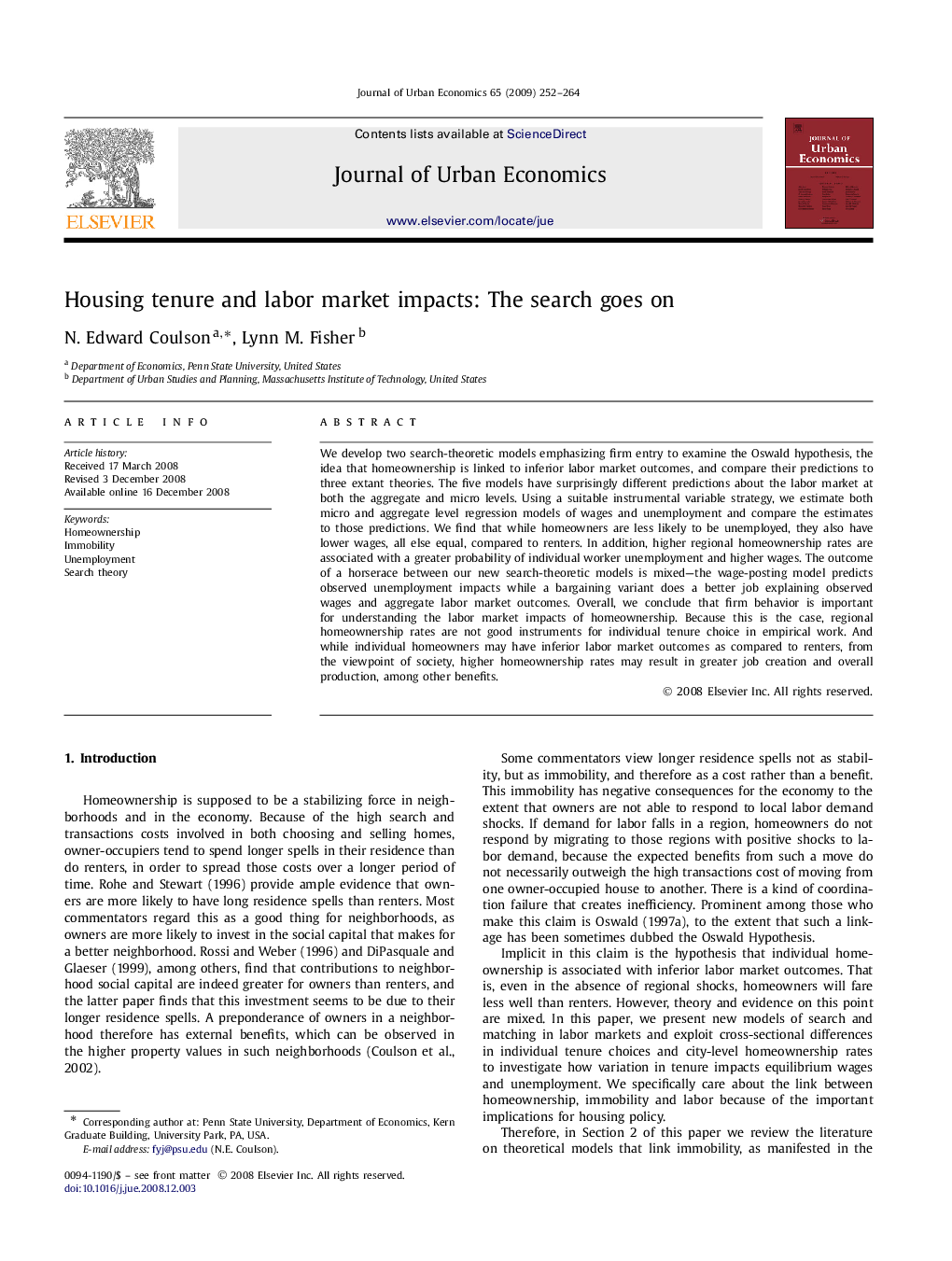| Article ID | Journal | Published Year | Pages | File Type |
|---|---|---|---|---|
| 970778 | Journal of Urban Economics | 2009 | 13 Pages |
We develop two search-theoretic models emphasizing firm entry to examine the Oswald hypothesis, the idea that homeownership is linked to inferior labor market outcomes, and compare their predictions to three extant theories. The five models have surprisingly different predictions about the labor market at both the aggregate and micro levels. Using a suitable instrumental variable strategy, we estimate both micro and aggregate level regression models of wages and unemployment and compare the estimates to those predictions. We find that while homeowners are less likely to be unemployed, they also have lower wages, all else equal, compared to renters. In addition, higher regional homeownership rates are associated with a greater probability of individual worker unemployment and higher wages. The outcome of a horserace between our new search-theoretic models is mixed—the wage-posting model predicts observed unemployment impacts while a bargaining variant does a better job explaining observed wages and aggregate labor market outcomes. Overall, we conclude that firm behavior is important for understanding the labor market impacts of homeownership. Because this is the case, regional homeownership rates are not good instruments for individual tenure choice in empirical work. And while individual homeowners may have inferior labor market outcomes as compared to renters, from the viewpoint of society, higher homeownership rates may result in greater job creation and overall production, among other benefits.
